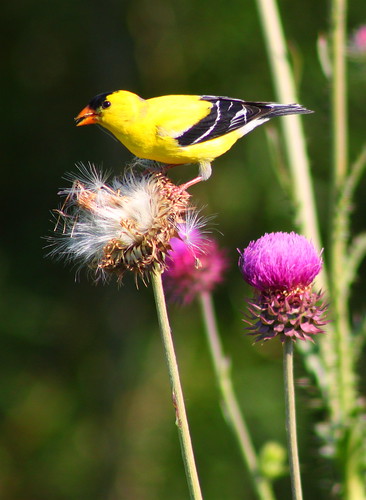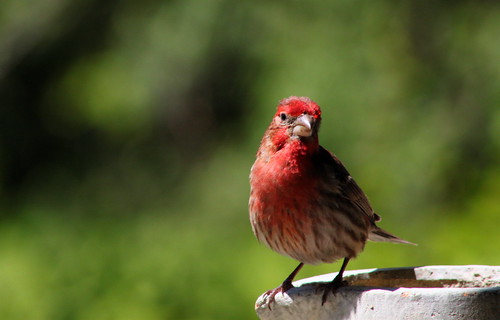Hello all! I am supposed to be packing for a weekend camping trip to Lake Cumberland, but I had to get a blog post in! It has been such a busy time!
I spent the first few weeks of May trying to hit as many field trips with the Beckham Bird Club as possible! I wanted to share a few of my pics and some links to my smugmug galleries from these field trips.
I joined BBC for a field trip to Black Acre Nature Preserve in Louisville, KY on April 28, 2012.
It was my first time to visit Black Acre and I really liked it, I will be back! Probably, one of the most interesting things I saw on this trip was a Grasshopper Sparrow spotted by our leader Michael Autin!
Grasshopper Sparrow
On April 29, 2012 I went on a field trip to Falls of the Ohio (one of my favorite places) led by Rob Lane!
We saw many birds at Ashland Park, near Falls of the Ohio State Park! It was deemed a mini fallout! Many warblers, Rose Breasted Grosbeaks, Baltimore and Orchard Orioles! It was a great trip!
Baltimore Oriole
May 5, 2012 I joined BBC again for a field trip to the Anchorage Trail (another of my favorites) led by Pat and Jane Bell!
This one started out slow, but we ended up seeing several Warblers, Gnatcatchers, Orioles and many other things. We even saw a few Baltimore Oriole nests and a Blue-gray gnatcatcher nest! Pretty cool!
Blue-gray Gnatcatcher
Indigo Bunting
The last field trip I visited was to Joe Creason Park/ Beargrass Nature Preserve led by Barbara Woerner!
Again, a first for me! Great place! We saw several cool things there, including a Bay-breasted Warbler and Olive-sided Flycatcher, both lifers for me!
Skink (Travis help me out here, I don't know what kind)
Olive-sided Flycatcher
Bay-breasted Warbler
Feel free to check out any of my galleries on Smugmug and leave a comment if you like! I have pics on there from our first day in Smoky Mountains National Park! I still have 3 more days of photos to get posted! It was a great trip, we actually saw some Bears this time!
I also wanted to update you on the various nest cams I have been checking on!
The KEEP Osprey nest cam is streaming live now, and they have three chicks that hatched a little more than a week ago! I just love Ospreys!
The Louisville Osprey nest did not have chicks as of last week, but I expect to have them pretty soon, as I feel that our Ospreys are about a week behind Lake Barkley's! I don't think I will be able to get down there today, since we are leaving for Lake Cumberland this afternoon! I will check on them Tuesday!
The Eagle chicks on the Decorah, Iowa nest cam are now eight weeks old, and jumping around excercising their wings, termed, wingercizing! It never ceases to amaze me how fast birds grow! They will fledge soon!
The eagle nest in Louisville has one chick that we know of! It was reported on April 16, 2012 by Tom and Colleen Becker. Luckily, the wind was blowing just enough to allow them a view of the nest through the leaves. Reportedly, there were two eggs in the nest! We will just have to wait to see them after fledging, since the leaves are so thick!
Here at my house, we have seen our first brood of House Sparrows and Starlings! I know neither are native, but the babies are so cute and fun to watch! I got a birdbath for my birthday and the baby Starlings are loving it!
Hopefully, I will have some good sightings to report from Lake Cumberland! Enjoy your Memorial Weekend!



 9:06 AM
9:06 AM










 Posted in:
Posted in: 










